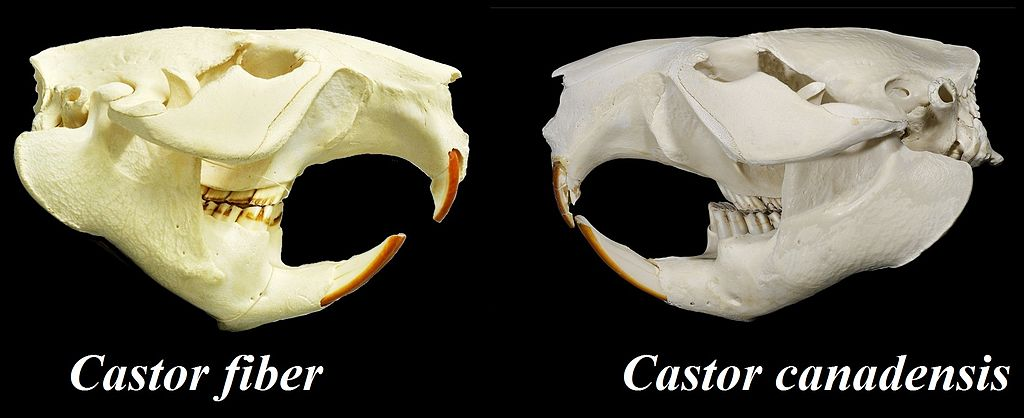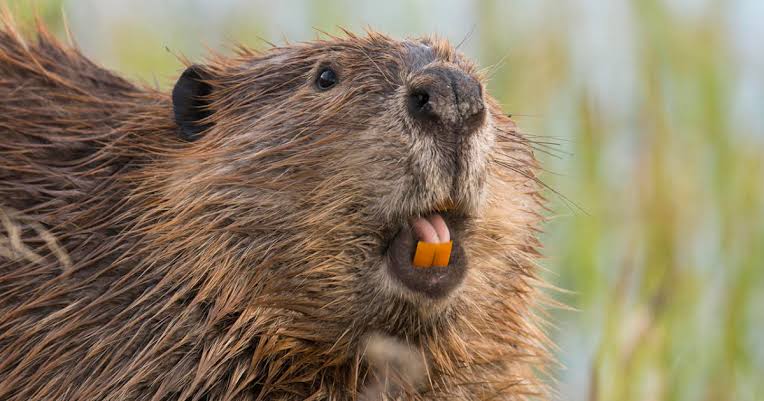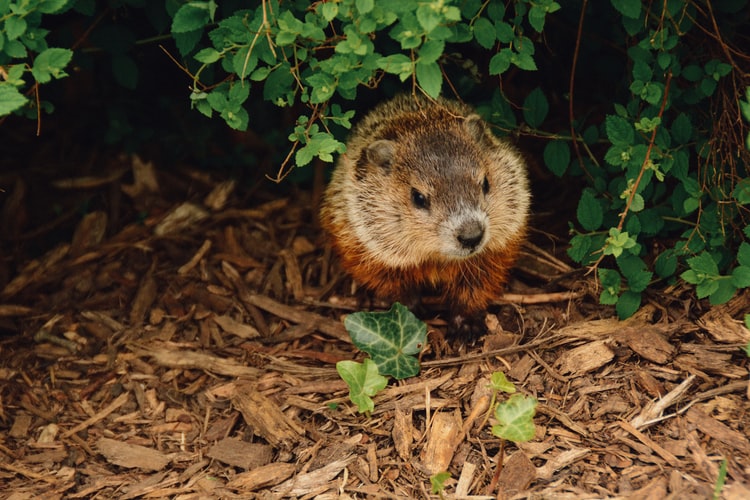After their extensive hunting, the Beavers became extinct in England. But recently in 2014, they made a big return, a first in the history of England for an extinct animal. Here is how they came back, and the plans initiated for its conservation and reintroduction.
What you need to know about Beavers
Beavers, the second-largest rodent on the planets and widely known for building canals, dams, and lodges. They belong to genus Castor, which is comprised of two extant species, including Castor canadensis (North American beaver) and Castor fiber (Eurasian beaver). Beavers are herbivores and mostly feed upon aquatic plants, grasses, shrubs, ferns, etc. and their favorite food includes twigs of aspen. They can cut down trees’ inner bark and wood by using their sharp and powerful front teeth, which grow continuously, that they use both for food and building lodges.
They create dams as well but preferably in the absence of ponds. Although beavers are slow on land, they are efficient swimmers, and when frightened, they dive rapidly and forcefully slap the water with their broad tails. The slapping sound is audible over long distances, and this serves as a warning or alarm signal to other beavers in the area. Beavers never hibernate and live up to almost 24 years of age in the wild. In the ecosystem, they work as a keystone species by creating wetlands to facilitate the vegetation of aquatic plants and potentially affect climate change.

Beavers are monogamous and maintain a family life comprising of almost 8 to 10 members in addition to monogamous pairs. They all work together to support and defend territories but mostly by adult beavers. When young beavers are born, the mother lives in the lodge with the newborn for a month while the father maintains the territory and food availability. After leaving the natal territories, they usually do not settle a great distance away, and through masterful detection of differences in anal gland secretion composition, they can recognize their kin. Those who are related share more features in their secretion than the others. This ability of recognition of kin is an important social behavior as it facilitates more tolerant behavior among neighboring beavers.
The Return of the Beaver
Beavers are native to the UK and also known to have a significant population located in England, Wales, and Scotland. In the 16th century, they became extinct mainly because of hunting for their fur, meat, and ‘castoreum,’ a secretion used in perfumes, food, and medicine. But they have returned in the wild, and it was the first time in history that an extinct mammal had been reintroduced in England.
In February 2014, a colony of wild beavers was discovered along the River Otter in Devon, and they were examined to ensure their health status and monitored to determine whether they will be beneficial for the local area or environment or not. Researchers have found that these beavers can play an essential role in tackling floods as they have the ability to significantly reduce the water flow, facilitate plant and animal life embellishment, and draw in a crowd of regular visitors to the area.
These animals were tested by the Department for Environment, Food, and Rural Affairs (DEFRA) for deadly diseases. After detailed examination and in January 2015, they were allowed to live freely along the Devon riverside as part of a five-year trial as per license granted to Devon Wildlife Trust. As part of the license, these beavers must have to be brought for regular medical check-ups.
The beavers further surprised the scientists with their complicated 100-foot-long (30-meter) dams weaving across Devon, and they have engineered a massive network of 14 pools and dams across almost 100 acres of the Coombes head Valley. Dam building ability of beavers makes them beneficial for the people and wildlife as well as it can potentially reduce the risk of flooding.
According to Professor Richard Brazier from the University of Exeter, research revealed that plant and animal life is also flourishing in ponds created by beavers as they catch sediment and inorganic fertilizers washed from farmland, which improves the fertility of the land and promotes rapid growth of plants. Almost seven breeding pairs, with approximately 13 beaver families, are known to be living on the riverside according to recent reports. According to a spokesperson for DEFRA,
“We are committed to reintroducing formerly native species, including beavers, where there are clear environmental and socio-economic benefits.”
No change in water level has been reported before the major drought struck nationwide at the end of May and the beginning of August. According to the results of a 5-year pilot study carried by the Devon Wildlife, beavers can have a positive impact on their natural environment and provide benefits for the local community as well. In addition to aiding water flow management and reducing the risk of flooding, wild beavers have also drawn tourist’s attention to the area. They have modernized habitat while also benefiting water voles, otters and wading birds. Beavers have also played a critical role in reducing soil erosion and decrease the flow rate of rivers, which ultimately reduce the risk of floods.

Plans to Reintroduce Beavers
Wildlife Trust of England is working with several other non-profit organizations to acquire technical expertise and evaluate the suitability of different river systems to support the beaver’s survival. Under an active management program introduced by the Scottish Government in November 2016, beavers were allowed to survive as protected species in Scotland riversides. Devon Wildlife Trust is actively working to meet the license terms and conditions. After ensuring disease-free status, Eurasian beavers have been returned to wild, with the agreement of local landowners. Unlicensed translocation of beavers is strictly prohibited by the government and wildlife organizations.
Wildlife Trusts in Wales are also working for a small-scale, unfenced reintroduction of beavers. In fact, there are more than 200 formal beaver reintroduction projects in more than 26 European countries, and several unofficial releases are also involved in the study of their ecology and management.
Commercial Use
Beaver’s testicles and castoreum, both have been used in traditional medicines in Iraq and Iran, more especially in pain killers and dried form is also used as contraception. Castoreum is a bitter-tasting secretion present in the castor sacs of male or female beaver. Other medicinal drugs include anti-inflammatory and antipyretic drugs. Castoreum secretion also has the potential to be used in dysmenorrhea and hysterical conditions for regulating blood pressure and enhancing cardiac output. In addition to pharmaceutical properties, castoreum also found its application in fragrance production.
It can also serve as a flavor enhancer, e.g., of vanilla, strawberry, and raspberry flavorings. It is sometimes added to frozen dairy, candy, and fruit beverages. As its availability is quite difficult, so it’s not commonly used in food products.
Beavers were also famous in fur-trade in North America and, more especially in Canada, which designate the beavers as their ”national animal” as they played a critical role in development through fur-trade. There also several other companies and organizations that have used the beaver as a symbol, including The Beaver (magazine), Beverley, East Riding of Yorkshire, UK, etc.
As there are a lot of beneficial impacts of beavers on both wildlife and humans as well so countries must work together for their reintroduction and survival by strictly following the environment-friendly measures.
Also Read: How the Australian wildfires are affecting the Koalas

Iqra Bibi is BS BIOCHEMISTRY student at Quaid e Azam University. She is serving YOLO as an academic Secretary and Also part of the event management team of various non-profit organizations. She loves to write Urdu poetry and work for its promotion through her Youtube channel “Harf e Junoon”. Her hobbies include novels and book reading.

